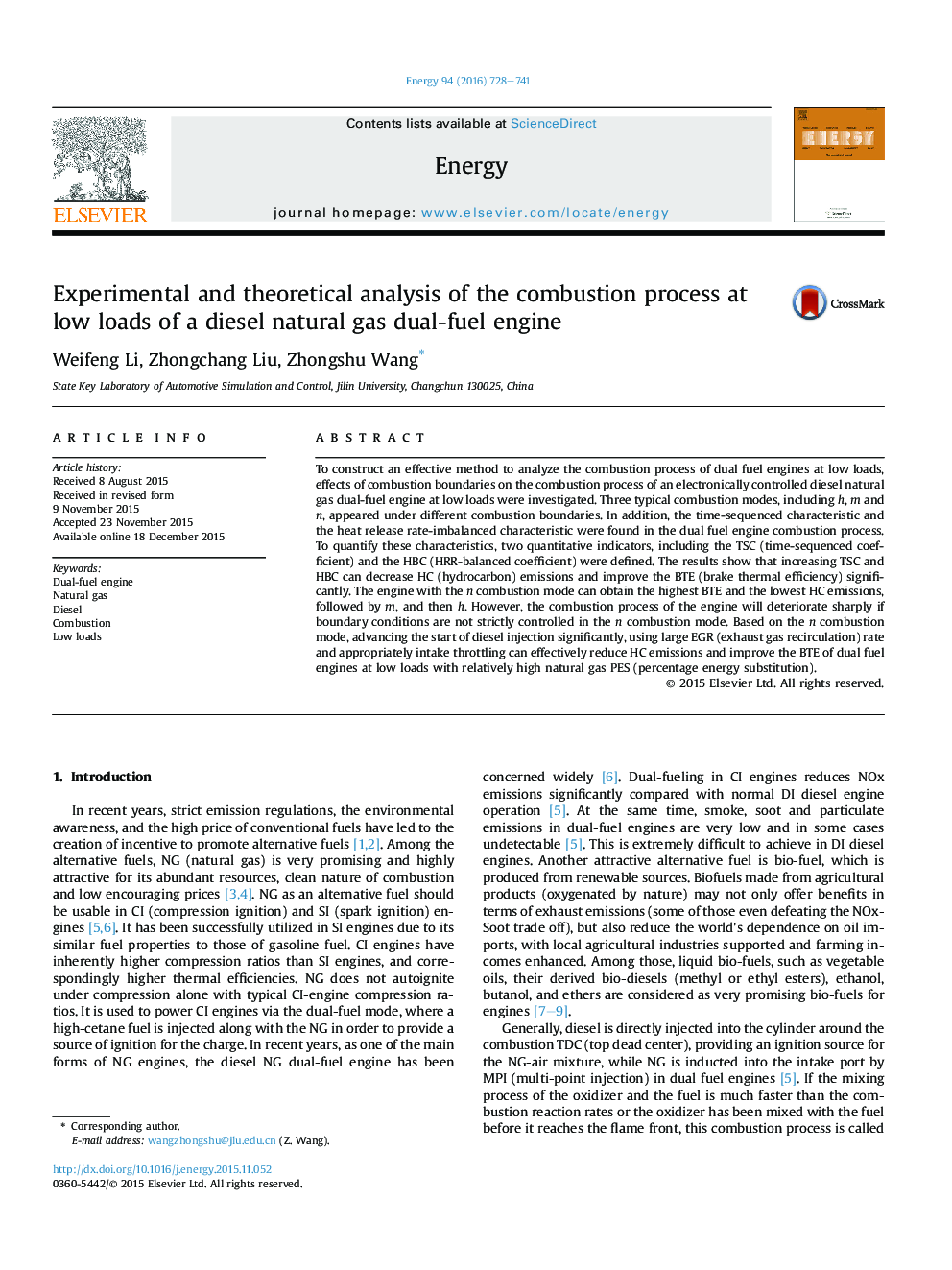| Article ID | Journal | Published Year | Pages | File Type |
|---|---|---|---|---|
| 1731227 | Energy | 2016 | 14 Pages |
Abstract
To construct an effective method to analyze the combustion process of dual fuel engines at low loads, effects of combustion boundaries on the combustion process of an electronically controlled diesel natural gas dual-fuel engine at low loads were investigated. Three typical combustion modes, including h, m and n, appeared under different combustion boundaries. In addition, the time-sequenced characteristic and the heat release rate-imbalanced characteristic were found in the dual fuel engine combustion process. To quantify these characteristics, two quantitative indicators, including the TSC (time-sequenced coefficient) and the HBC (HRR-balanced coefficient) were defined. The results show that increasing TSC and HBC can decrease HC (hydrocarbon) emissions and improve the BTE (brake thermal efficiency) significantly. The engine with the n combustion mode can obtain the highest BTE and the lowest HC emissions, followed by m, and then h. However, the combustion process of the engine will deteriorate sharply if boundary conditions are not strictly controlled in the n combustion mode. Based on the n combustion mode, advancing the start of diesel injection significantly, using large EGR (exhaust gas recirculation) rate and appropriately intake throttling can effectively reduce HC emissions and improve the BTE of dual fuel engines at low loads with relatively high natural gas PES (percentage energy substitution).
Related Topics
Physical Sciences and Engineering
Energy
Energy (General)
Authors
Weifeng Li, Zhongchang Liu, Zhongshu Wang,
